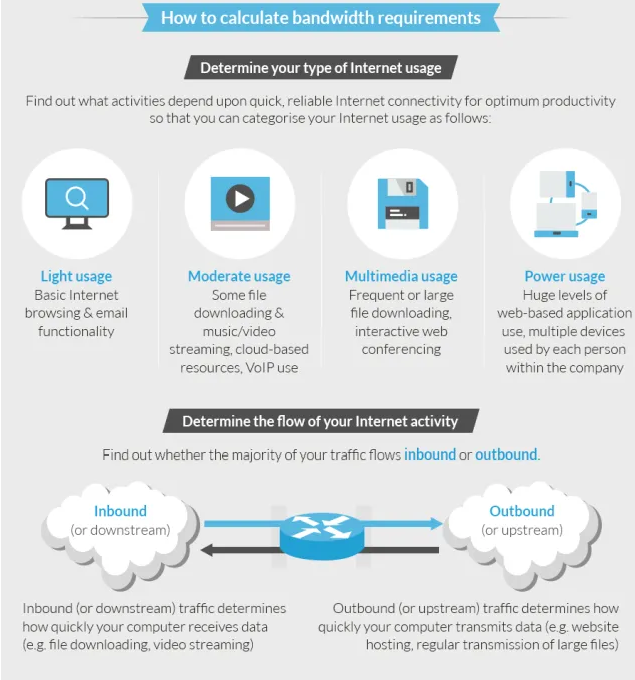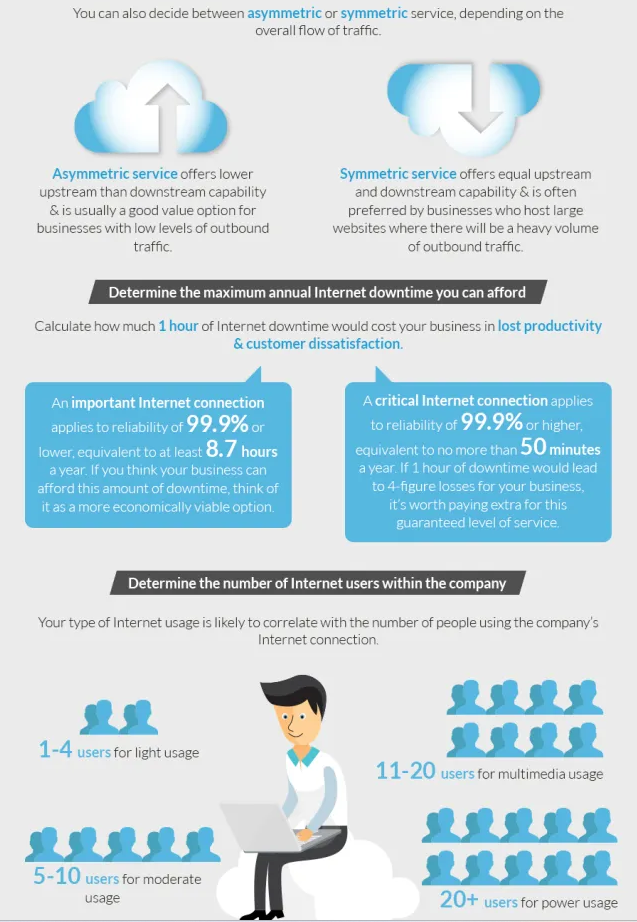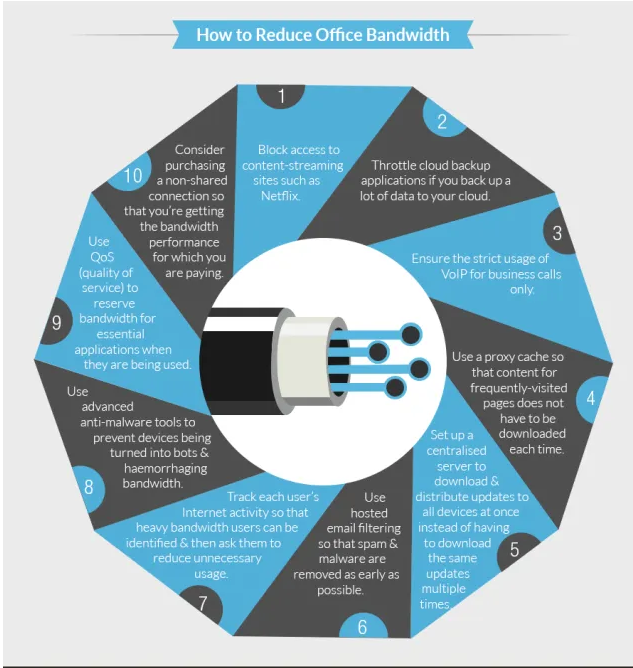Network congestion and bottlenecks are the scourge of any business network, causing interruptions to network traffic, poor network performance, and unwanted downtime.
Network bandwidth management or bandwidth control is the process of regulating the amount of data on a network at any given time, and where it is to be allocated by priority. This ensures that critical applications and devices are allocated the maximum bandwidth they need.
In this guide we'll explain the importance of bandwidth management and the things that organizations can do to achieve better control of their bandwidth utilization.
Find out more about what causes network congestion and how to fix it
What is bandwidth management?
The terms bandwidth and internet speed are often used interchangeably, and thought to mean the same thing, but the difference can be summed up like this:
Internet bandwidth refers to the volume of (how much) data can be uploaded or downloaded, while internet speed describes how fast the data can be uploaded or downloaded on your computer. Bandwidth is calculated in megabits per second (Mbps).
Network bandwidth management, bandwidth control or bandwidth throttling are all terms used to ensure fair and efficient network traffic control. Managing network bandwidth, or capacity, is vital for corporate networks to guarantee that there's enough bandwidth allocated to business critical services.
The larger the amount of bandwidth, the faster the network connection speed will be. Imagine that drinking straws come in different sizes. With a larger the straw, more liquid passes through it more quickly. In the same way, network devices and applications with more bandwidth have faster internet connections.
To manage network traffic and to prioritize distribution of the flow of data, bandwidth management tools are vital. They can help monitor, customize, and keep in check the distribution of your bandwidth and data rates at any time.
Why is bandwidth management important?
To ensure that important online processes run smoothly, it's important to identify unneeded traffic and prioritize network traffic patterns in ways that allocate maximum bandwidth to certain users, devices, or platforms.

Image source: Techbuzzireland
Without proper management, critical business applications could be denied the amount of bandwidth they need, resulting in bottlenecks, latency, packet loss and ultimately reduced service. Here are some of the key reasons why bandwidth management is an important part of network performance:
Prioritizing traffic
Bandwidth control enables network administrators to prioritize specific types of traffic over others. For example a real time high data consuming application like video conferencing may be allocated higher priority than tasks like file downloads, which may be less time-sensitive.
Traffic shaping
Network devices and bandwidth management software are able to shape traffic by specifying how much bandwidth usage is allocated for certain applications or users. There are various methods used for traffic shaping, including rate limiting and QoS (quality of service) policies.
Fair usage
Bandwidth management tools ensure that no single application, device or user is able to monopolize the available network resources. Fair usage helps allocate a relevant portion of bandwidth, preventing congestion.
Peak and off-peak usage
Bandwidth management can be used to control bandwidth during periods of lower network activity, when it can be increased, and high-demand periods, when it can be reduced.
Security
Bandwidth management also plays a vital role in network security. By limiting available bandwidth to certain types of traffic or users, a bandwidth management tool can help mitigate malicious attacks like Distributed Denial of Service (DDoS).
Find out how to manage network bottlenecks
How does bandwidth management work?
Network congestion can happen unexpectedly if not controlled. If you notice it happening, using bandwidth management options can help lessen the negative impact that it's having.
-
Some bandwidth management options allow you to define the exact amount of bandwidth (often in kilobytes per second) allowable for each task
-
Some bandwidth control options allow the allocation of a percentage of the total bandwidth to the application or task.
-
Some bandwidth control systems are capable of dynamic adjustment, based on real time network conditions
-
Other options allow you to control bandwidth based on the time of day or on other criteria.
Examples of bandwidth control tools
Several tools and software can be used to implement bandwidth management, for example:
-
Bandwidth limiters - using a predefined set of criteria, bandwidth limiters monitor and prioritize network traffic.
-
Routers - some routers have the capabilities to analyze network traffic patterns and implement some form of bandwidth control.
-
Traffic shaping tools - these tools can delay certain types of network traffic packets to give way to more essential devices or applications.
How do you calculate bandwidth?
The amount of bandwidth needed by an organization varies greatly, depending on the type of industry, the type of network they have (on premises, remote or hybrid), the number of users on the network, and how they plan to utilize their internet access.
To determine how much bandwidth a business needs to buy, they need to conduct a thorough audit of its internet usage.
This should encompass the browsing activity of users on the company’s network and the flow of activity so that they can prioritize traffic.
The result of improper bandwidth management is downtime, so businesses need to factor in the maximum downtime that the business can afford without productivity and profitability being affected.


Image source: Techbuzzireland
Tips for network bandwidth management and control
Network bandwidth management is all about knowing exactly what your bandwidth is being used for. Once you analyze network traffic patterns, you may find you need to implement work usage policies.
While employees may be the largest bandwidth consumers, it may not be all for work! Many are active on social media during work hours, or even if in their lunch hour they're on YouTube uploading photos and videos, it can amount to hours of usage per day. Obviously this can add up, and affect network performance.
Here are some ways to reduce office bandwidth usage:

1. Restrict employee access to streaming services
Restricting streaming services such as Spotify, YouTube, or Netflix can help you save bandwidth and money. You can do this by either installing a web content filtering service on computers, or apply restrictions to the entire office network through a firewall/router hardware device.
2.Throttle cloud backup applications
Throttling your cloud backup application is another good bandwidth management method. If using it for anything other than backing up smaller files like Microsoft Office documents, an unthrottled cloud backup solution will potentially consume a huge amount of bandwidth.
3.Limit VoIP usage
VoIP also uses quite a lot more network bandwidth, so implementing restriction policies that phones are to be used for business calls only is another bandwidth control strategy.
Need to know more about VoIP quality control?
4.Use a proxy cache
Using a proxy cache can help with bandwidth management. It means that content for frequently-visited pages does not have to be downloaded each time because it already exists in the cache. Proxy caches can also create the illusion that your internet connection is much faster than it really is.
5. Centralize application updates
Periodic updates can use a lot of bandwidth, but by centralizing the update process, you can ensure the same updates aren’t being downloaded over and over again. For example, by setting up a WSUS you can download all updates to one server and then make them available to the individual devices.
6. Use QoS policies to reserve bandwidth
Quality of Service is a bandwidth management method that can be used to reserve more bandwidth for certain applications. The bandwidth reservation is in effect only when the application is actively being used. At other times, the bandwidth that is reserved for the application is available for other uses.
Improve network performance with our in-depth guide
Network Troubleshooting with IR Collaborate
Bandwidth control with IR's network monitoring tools
For any business, network bandwidth utilization is an important factor in daily workflow. Maximum and minimum bandwidth management is vital to ensure that critical activities are not interrupted, and that individual users can get their fair share from the network.
Continuous network monitoring enables businesses to gather data about the status of a network by polling network devices for availability and performance statistics, like when more bandwidth is needed, or a network connection is experiencing issues.
Bandwidth monitoring can pinpoint what causes downtime, including information on which device, in which location, and when.
IR Collaborate does this job for you and alerts you when there is downtime, device unavailability, performance issues or any deviation from an accepted network baseline.
As organizations move more and more services to the cloud, and adopt hybrid work practices, it's becoming increasingly important to include network monitoring as part of a bandwidth management strategy.
Book a demo and see what IR can do for your business




